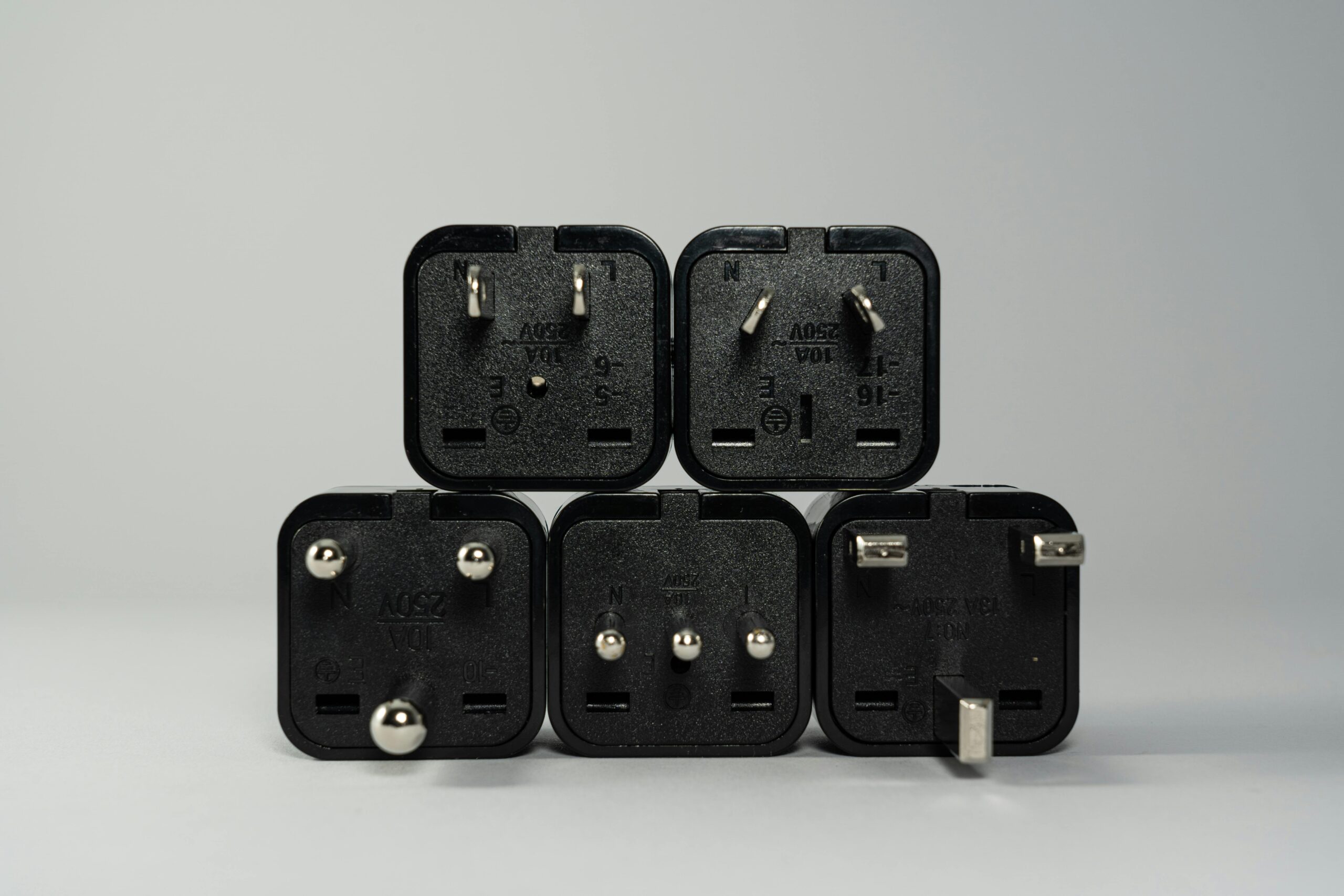Are you confused about how to calculate electrical power? Watts Law is the key to unlocking the mysteries of electrical power calculations! This fundamental principle clarifies the relationship between voltage, current, and resistance, making it essential for engineers, electricians, and DIY enthusiasts alike. Have you ever wondered how to determine how much energy your appliances consume? With Watts Law, you can easily calculate the power consumption of any electrical device, ensuring you’re not overspending on your electricity bills.
In today’s world, where energy efficiency is more important than ever, understanding Watts Law can lead you to make smarter choices about your energy usage. Are you ready to dive into the secrets behind electrical power and learn how to apply these calculations in real-life scenarios? By grasping the concepts of voltage, current, and power, you’ll not only enhance your knowledge but also empower your projects. Whether you’re working on home renovations or simply aim to reduce your carbon footprint, mastering Watts Law is a game changer. Join us as we explore the ins and outs of this essential law and transform your understanding of electrical power!
Mastering Watts Law: A Step-by-Step Guide to Simplifying Electrical Power Calculations
Mastering Watts Law: A Step-by-Step Guide to Simplifying Electrical Power Calculations
Navigating the world of electrical power can be really confusing. Many people struggle to understand how to calculate power in electric circuits. Watts Law provides a clear formula to help you make sense of these calculations. By understanding this law, you can simplify complex equations and make informed decisions in various fields, from engineering to home improvement projects. This guide will break down Watts Law in an easy-to-follow format, ensuring you grasp the essential concepts without getting lost in technical jargon.
What is Watts Law?
Watts Law, named after the renowned Scottish inventor James Watt, describes the relationship between power (P), voltage (V), and current (I). It states that power equals voltage multiplied by current. This relationship is fundamental to understanding how electricity works. The formula can be expressed as:
P = V × I
Where:
- P = Power in watts
- V = Voltage in volts
- I = Current in amperes
With this simple equation, you can calculate the power consumed by electrical devices, which is crucial for energy management and efficiency.
Historical Context
James Watt developed the steam engine during the late 18th century. His work laid the foundation for the Industrial Revolution, but it also led to significant advances in electrical engineering. Although Watts Law wasn’t explicitly formulated by him, his contributions to the concept of power paved the way for future discoveries in electricity. Over the years, engineers and scientists built upon Watt’s principles, leading to a more comprehensive understanding of electrical systems.
Breaking Down Watts Law: A Step-by-Step Approach
To fully grasp Watts Law, it’s helpful to go through a practical example. Let’s say you have a light bulb rated at 60 watts. We can use Watts Law to figure out the voltage and current involved in this situation:
- Identify Power (P): The light bulb uses 60 watts.
- Determine Voltage (V): Assume you know the voltage of your electrical outlet is 120 volts.
- Calculate Current (I): Using the formula, rearrange it to find current: I = P / V.
So, plug in the numbers:
I = 60 watts / 120 volts = 0.5 amperes.
This tells you the light bulb draws half an amp of current when operating.
Practical Applications of Watts Law
Watts Law has many applications in daily life and professional settings. Here’s a list of areas where understanding this law can be beneficial:
- Home Renovations: Knowing how much power your appliances use can help you design a more efficient electrical system.
- Energy Audits: Calculate the power consumption of devices to identify areas for energy savings.
- Electrical Engineering: Engineers rely on Watts Law to design circuits and systems that optimize power usage.
- Safety Assessments: Understanding the relationship between voltage and current can help in assessing potential hazards in electrical systems.
Comparing Power, Voltage, and Current
It’s also useful to compare the roles of power, voltage, and current in electrical systems. Here’s a simple table to illustrate their differences:
| Term | Symbol | Unit | Description |
|---|---|---|---|
| Power | P | Watts | The rate at which electrical energy is consumed. |
| Voltage | V | Volts | The electric potential difference between two points. |
| Current | I | Amperes | The flow of electric charge through a conductor. |
Common Mistakes in Power Calculations
When working with Watts Law, people often make these mistakes:
- Confusing units: Mixing up watts with volts or amperes can lead to incorrect calculations.
- Ignoring resistance: While Watts Law doesn’t directly involve resistance, it’s essential to consider it in real-world applications.
- Overlooking efficiency: Not all devices operate at their rated power, which means actual consumption may differ.
Conclusion
Mastering Watts Law is essential for anyone who interacts with electricity, whether in a professional or personal capacity. By understanding the basic formula and its applications, you can simplify electrical power calculations. This knowledge not only enhances your technical skills but also empowers you to make smarter choices regarding energy consumption and efficiency. Embrace the journey of learning about electrical power, and you’ll find that Watts Law is a valuable tool in your toolkit.
5 Essential Tips for Applying Watts Law in Real-World Electrical Scenarios
Understanding Watts Law is crucial for anyone working with electrical systems, whether you’re an electrician, engineer, or a DIY enthusiast. This law, which relates power, voltage, and current, is fundamental in electrical calculations. But knowing the theory is one thing; applying it in real-world scenarios is another. Here are 5 essential tips for applying Watts Law in practical situations.
What is Watts Law?
Watts Law is a principle that states power (measured in watts) is equal to the product of current (in amperes) and voltage (in volts). It can be expressed with the formula:
Power (P) = Voltage (V) x Current (I)
Understanding this simple formula is key, but let’s dive deeper into how to use it effectively in various situations.
1. Know the Basic Units
When working with Watts Law, you must understand the units. Here’s a quick breakdown:
- Power (P): Measured in watts (W)
- Voltage (V): Measured in volts (V)
- Current (I): Measured in amperes (A)
Sometimes people mix these up, leading to calculations errors. For instance, if you confuse volts with amps during a calculation, your final result could be way off. Always double-check your units before proceeding.
2. Convert Units When Necessary
In many cases, you will find the need to convert units to make them compatible. For example, if you have power in kilowatts (kW) but need it in watts, you should remember:
1 kW = 1000 W
Similarly, if dealing with milliamperes (mA), realize:
1 A = 1000 mA
So, if you’re working with a device that consumes 2 kW, you should convert it:
2 kW = 2000 W
This step is often overlooked, but it can be the difference between a functioning circuit and a blown fuse.
3. Use Real-World Examples
Let’s say you have a light bulb rated at 60 watts and you want to find out how much current it draws at a voltage of 120 volts. Using Watts Law:
P = V x I → 60 W = 120 V x I
Rearranging gives us:
I = P / V → I = 60 W / 120 V = 0.5 A
This means your light bulb draws 0.5 amperes of current. Familiarizing yourself with such scenarios can help you apply Watts Law effectively and confidently in everyday situations.
4. Factor in Efficiency
In real-world applications, devices are not always perfectly efficient. Thus, it’s essential to consider efficiency ratings. For example, if an electrical motor has an efficiency of 85%, you need to adjust your calculations:
Effective Power (P) = Input Power / Efficiency
If your motor is rated for 1000 W input, the effective power output would be:
Effective Power (P) = 1000 W / 0.85 ≈ 1176.5 W
Being aware of efficiency can prevent overloading circuits and equipment failure.
5. Troubleshoot with Watts Law
Watts Law can also help in troubleshooting electrical issues. If you notice that a circuit breaker keeps tripping, you can calculate if the load exceeds the breaker’s rating. For example, if your breaker is rated at 15 A and your circuit has devices totaling 1800 W at 120 V, it’s time to do the math.
Using Watts Law:
I = P / V → I = 1800 W / 120 V = 15 A
In this case, your circuit is at the maximum capacity, which explains the tripping. Knowing this allows you to either reduce the load or upgrade the breaker.
Practical Tips for Applying Watts Law
Here are some handy tips to remember when using Watts Law:
- Always double-check your calculations for accuracy.
- Use a multimeter to measure actual voltage and current when possible.
- Keep a conversion chart handy for quick reference.
- Understand the context of your devices and their ratings.
- Regularly perform maintenance checks on your electrical systems.
Applying Watts Law effectively can greatly enhance your understanding and ability to work with electrical systems. Embracing these tips will not only help you avoid common pitfalls but also empower you to troubleshoot issues confidently. Whether you’re an electrical professional or just a curious homeowner, mastering these principles will go a long way in ensuring safe and efficient electrical practices.
Understanding the Power of Watts Law: How It Transforms Electrical Engineering
Understanding the Power of Watts Law: How It Transforms Electrical Engineering
When it comes to electrical engineering, Watts Law is one of the most fundamental concepts that every engineer and technician should grasp. Its significance cannot be overstated, as it forms the basis for understanding how electrical power is calculated. Grasping Watts Law is essential for anyone who works with electricity, whether in designing circuits or troubleshooting electrical systems.
What is Watts Law?
Watts Law states that the power (P) in an electrical circuit is equal to the product of the current (I) flowing through the circuit and the voltage (V) across it. This relationship is expressed in the formula:
P = V × I
Where:
- P = Power in watts (W)
- V = Voltage in volts (V)
- I = Current in amperes (A)
This equation highlights how power is not just about voltage or current individually, but rather their interaction. Understanding this relationship can lead to more efficient designs and safer electrical systems.
Historical Context of Watts Law
The law is named after James Watt, a Scottish inventor and mechanical engineer who played a significant role in the development of the steam engine. Though he primarily worked on mechanical systems, his influence on the understanding of energy and power paved the way for advancements in electrical engineering.
Watts Law emerged during the late 19th century when the electrical power industry was beginning to take shape. It provided a mathematical framework that helped engineers and scientists calculate and predict electrical power consumption, which was crucial for the burgeoning electrical infrastructure.
The Components of Watts Law
To fully understand Watts Law, one must delve into its components. Here’s a breakdown of each:
- Voltage (V): This is the electrical potential difference between two points. Voltage can be thought of as the “pressure” that pushes electric charges through a circuit.
- Current (I): This refers to the flow of electric charge. It is measured in amperes and indicates how much charge is moving through the circuit.
- Power (P): This represents the rate at which electrical energy is consumed or produced. Watts is a measure of this energy usage.
Practical Applications of Watts Law
Watts Law is utilized in various ways across different fields. Here are a few examples:
- Circuit Design: Engineers use Watts Law to determine the sizes of wires and components needed to handle certain loads safely.
- Energy Consumption Calculations: Homeowners can estimate their energy bills by applying Watts Law to their appliances, calculating how much power they use.
- Renewable Energy Systems: In solar or wind energy systems, Watts Law helps in assessing the efficiency of energy conversion.
Real-World Examples
Let’s look at some practical examples to see how Watts Law works in real life:
If you have a light bulb rated at 60 watts operating at 120 volts, you can calculate the current flowing through it as follows:
I = P / V = 60 W / 120 V = 0.5 A
Conversely, if you know the current flowing through a heater is 10 A and it operates on 240 V, you can determine the power it consumes:
P = V × I = 240 V × 10 A = 2400 W
Common Misconceptions
Many people misunderstand Watts Law, often confusing power with voltage or current. Here are some common misconceptions:
- Power is the same as voltage: Power and voltage are different; voltage is just one part of the equation.
- Higher voltage means higher power: Not necessarily. Power depends on both voltage and current.
Summary of Key Points
- Watts Law is essential for electrical engineers and anyone working with electricity.
- The formula P = V × I illustrates how power, voltage, and current interact.
- Understanding this law helps in practical applications like circuit design and energy consumption.
As electrical engineering continues to evolve, the principles behind Watts Law remain foundational. It empowers engineers to innovate and optimize electrical systems, ensuring they function safely and efficiently. The knowledge of how to apply Watts Law is not just for engineers; it’s valuable for anyone interested in understanding the science of electricity. So, whether you’re designing a new gadget or simply trying to lower your electric bill, grasping the power of Watts Law can unleash the secrets of electrical power calculations.
Watts Law Explained: The Key Formula Every Electrician Should Know
Understanding Watts Law is crucial for anyone working in the electrical field, especially electricians. This fundamental principle helps you calculate electrical power, a vital aspect of electrical systems. Whether you’re an apprentice or a seasoned electrician, knowing the ins and outs of Watts Law can save you from costly mistakes and enable you to work more efficiently.
What is Watts Law?
Watts Law states that the power (in watts) in an electrical circuit is equal to the product of the current (in amperes) and the voltage (in volts). This can be expressed in a simple formula:
Power (P) = Voltage (V) × Current (I)
This relationship is essential for understanding how electricity works and is applicable in many practical scenarios.
Historical Background
The law is named after James Watt, who was a Scottish inventor and mechanical engineer. He is best known for his improvements to the steam engine, but his work also extended into electrical power. The equation was derived in the late 19th century when the understanding of electricity was still evolving. Watt’s contributions to the field of engineering helped lay the groundwork for modern electrical systems.
Key Components Explained
To fully grasp Watts Law, it’s important to understand its components:
- Power (P): The rate at which energy is used or produced, measured in watts (W).
- Voltage (V): The electric potential difference, measured in volts (V).
- Current (I): The flow of electric charge, measured in amperes (A).
These components interact in a circuit, and knowing how they relate helps in designing and troubleshooting electrical systems.
Practical Applications of Watts Law
Electricians use Watts Law in various scenarios. Here are a few examples:
- Calculating Load: When installing a new appliance, you can calculate how much power it will draw, ensuring that your circuits can handle the load.
- Circuit Design: Understanding the relationship helps in designing circuits that are safe and efficient.
- Troubleshooting: If a circuit is not functioning properly, you can measure current and voltage and apply Watts Law to identify the issue.
Common Miscalculations and Mistakes
It’s easy to make mistakes when applying Watts Law. Here’s a list of common pitfalls:
- Forgetting to convert units (e.g., milliamps to amps)
- Misunderstanding the relationship between volts, amps, and watts
- Assuming all equipment operates at the same voltage level
Example Calculation
Let’s say you have a circuit with a voltage of 120 volts and a current of 10 amperes. To find the power, you can plug the values into the formula:
P = V × I
P = 120 volts × 10 amperes
P = 1200 watts
This means the circuit is using 1200 watts of power. Simple, right? But if you don’t remember to check the circuit’s capacity, you could overload it.
Important Safety Considerations
Electricians must always prioritize safety when dealing with electrical systems. Here are some essential safety tips:
- Always turn off power before working on a circuit.
- Use insulated tools to prevent shocks.
- Double-check calculations to avoid overloads.
Comparison of Watts Law with Other Electrical Laws
- Ohm’s Law: Another crucial law in electronics. Ohm’s Law states that Voltage (V) = Current (I) × Resistance (R). While Watts Law focuses on power, Ohm’s Law relates to resistance, and understanding both is key.
| Law | Formula | Focus |
|---|---|---|
| Watts Law | P = V × I | Power |
| Ohm’s Law | V = I × R | Voltage and Resistance |
Quick Reference Table
Here’s a quick reference for common values electricians might encounter while applying Watts Law:
| Voltage (V) | Current (A) | Power (W) |
|---|---|---|
| 120 V | 5 A | 600 W |
| 240 V | 10 A | 2400 W |
| 12 V | 2 A | 24 W |
Understanding these values can help you quickly assess situations on the job site.
Mastering Watts Law is not just an academic exercise; it’s a practical necessity in the electrical field. By applying this fundamental principle, electricians can ensure their work is safe, efficient, and effective. Remember to stay updated with the latest safety standards and techniques, and always double-check your calculations. This way, you can confidently tackle any electrical project that comes your way.
From Basics to Advanced: Navigating the Intricacies of Watts Law in Electrical Design
Navigating the complex world of electrical design can be overwhelming, especially when it comes to understanding Watts Law. This fundamental principle of electrical engineering, often overlooked, is key to mastering power calculations. Whether you are a seasoned engineer or a student just starting, grasping the intricacies of Watts Law can unlock new potentials in your design projects.
Watts Law: A Quick Overview
Watts Law states that the power (P) in an electrical circuit is equal to the product of the current (I) flowing through the circuit and the voltage (V) across it. The formula is expressed as:
P = V x I.
This simple equation forms the basis for many calculations in electrical engineering and design. Understanding it is crucial for anyone involved in the field.
Historical Context of Watts Law
Named after James Watt, a Scottish inventor, and mechanical engineer, Watts Law emerged during the late 18th century when the world was beginning to harness electricity for practical use. Watt’s contributions to engineering, particularly with steam engines, laid the groundwork for future innovations in electrical power.
- James Watt’s inventions revolutionized energy use.
- The introduction of electricity into homes began in the late 1800s.
- Electrical engineering as a distinct discipline started to take shape in the early 20th century.
This historical backdrop highlights the significance of Watts Law as a foundation upon which modern electrical systems are built.
Breaking Down Watts Law: Basic to Advanced
Understanding Watts Law is not just about memorizing a formula; it’s about applying it in various contexts. Here’s a structured approach:
Basic Calculations:
- For simple circuits, you can easily calculate power using known values for current and voltage.
- Example: If you have a 10-ampere current flowing through a circuit with a voltage of 120 volts, the power would be P = 120V x 10A = 1200 watts.
Advanced Applications:
- In complex systems, factors like resistance, impedance, and phase difference come into play.
- Power factor can affect real power calculations, especially in AC circuits.
- Real Power (P): The actual power consumed by the circuit (in watts).
- Reactive Power (Q): The power that oscillates between the source and load (in reactive volt-amperes).
- Apparent Power (S): The product of voltage and current without considering phase difference (in volt-amperes).
Practical Examples of Watts Law
To further clarify how Watts Law is applied, consider the following scenarios:
Lighting Systems:
- If a light fixture uses 60 watts and operates at 120 volts, the current drawn can be calculated as I = P/V = 60W/120V = 0.5A.
Heating Elements:
- A heater rated at 1500 watts on a 240-volt supply would draw I = 1500W/240V = 6.25A.
Industrial Applications:
- In factories, understanding Watts Law is crucial for sizing generators and transformers. For instance, if a machine operates at 5000 watts and works on a 480-volt supply, engineers must ensure the circuit can handle 10.42 amperes.
Comparison of Power Types
Understanding the differences between power types can help in using Watts Law effectively. Here’s a quick comparison:
| Type of Power | Description | Units |
|---|---|---|
| Real Power (P) | Power used to do work | Watts (W) |
| Reactive Power (Q) | Power that does not do work, but circulates | Volt-amperes reactive (VAR) |
| Apparent Power (S) | Combination of real and reactive power | Volt-amperes (VA) |
Final Thoughts
Navigating the intricacies of Watts Law can seem daunting at first, but once the basics are mastered, you can progress to more complex applications with confidence. This fundamental principle is more than just a formula; it is a gateway to understanding the broader concepts of electrical design and engineering. By grasping both the foundational and advanced aspects of Watts Law, you become better equipped to tackle the challenges of electrical systems, ensuring safety and efficiency in your designs. Embracing this knowledge gives you a powerful tool in the evolving field of electrical engineering.
Conclusion
In conclusion, Watts Law serves as a vital principle in electrical engineering, illustrating the relationship between power, voltage, and current in a circuit. By understanding that power (in watts) is the product of voltage (in volts) and current (in amperes), professionals and enthusiasts alike can make informed decisions regarding energy consumption and circuit design. This fundamental concept not only aids in optimizing electrical systems for efficiency but also plays a crucial role in renewable energy applications and energy management strategies. As we continue to advance toward a more energy-conscious future, leveraging Watts Law can empower individuals and businesses to reduce costs and enhance sustainability. We encourage readers to delve deeper into this essential principle, experiment with its applications, and share their insights with others. By fostering a broader understanding of electrical concepts like Watts Law, we can all contribute to a more informed and energy-efficient society.



